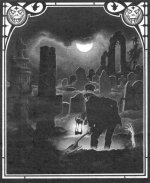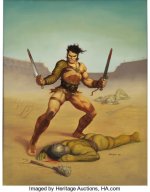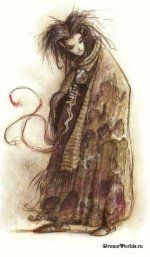If you are sincere in this question...well, it's the sorites paradox. Everyone agrees a single grain of sand isn't a heap, and most will agree that adding a single grain of sand doesn't change whether something is or isn't a heap. Conclusion: heaps are guaranteed (even zero grains is a heap!) and impossible (even a nigh-infinite quantity of sand is not a heap).
But if you want some kind of actual answer--recognizing that by definition this is purely a matter of interpretation so no one is obligated to agree with my specific answer--then I would say you need at least three, preferably more, and they need to be relatively close to one another in time. E.g., if your three examples were one image from the 5e PHB, one image from exactly halfway between then and now, and one image from JTTRC, I would be pretty skeptical still. But if it were, say, looking at all the covers for 5e hardbacks in chronological order, that would at least make it significantly harder to debate on the basis of "too little evidence," and would thus tend to bring in debates about whether the proffered examples actually demonstrate the claimed pattern (IOW, the numbers argument would cease and a much more subjective "is this what Beancounter claims it is?" argument would likely come up).
A significant part of the problem, though, is that the claim is difficult to demonstrate solely through positive evidence, because it is a mixed positive and negative claim. It's not just, "This is a new style," it is "this is a new style, and the old(er) style(s) is/(are) being disproportionately displaced by it." First half is positive (it claims a new style has appeared), second half is negative (it claims the old style is disappearing). A claim of that nature, as established by evidence rather than feeling, would basically require you to conduct a survey across the past several years (at least) to demonstrate that there was a consistent style, and that it's being consistently replaced with some other, different style now. Also, note the "disproportionate" thing--you could be right that this new style is taking up some of the room, but that could simply be that it is a new style now represented among the variety of old styles, only "reducing" them because there is a finite amount of art that can be put onto books.



